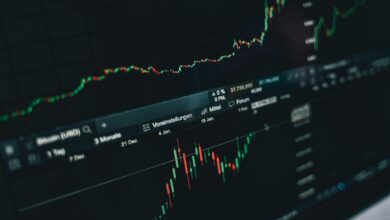Day Trading 101: A Beginner’s Guide to Strategies and Tools for Success

In the fast-paced world of finance, day trading has emerged as an enticing avenue for individuals seeking to capitalize on short-term market fluctuations. For beginners, the prospect of buying and selling stocks within the same trading day can seem both thrilling and daunting. Understanding the fundamentals of day trading is crucial for anyone looking to navigate this dynamic landscape successfully. In this article, we will break down the essentials of day trading, providing a solid foundation for newcomers. We'll explore the basic principles that every aspiring trader should grasp, highlight the essential tools and platforms that can facilitate your trading journey, and share proven strategies that can enhance your chances of success in those crucial first trades. Whether you're looking to supplement your income or embark on a new career path, this guide will equip you with the knowledge and confidence you need to get started in the world of day trading.
- understanding-day-trading:-the-basics-every-beginner-should-know“>
1. Understanding Day Trading: The Basics Every Beginner Should Know
Day trading is a trading strategy that involves buying and selling financial instruments within the same trading day, often executing multiple trades throughout the day to capitalize on short-term market movements. For beginners, understanding some fundamental concepts is essential to navigate this fast-paced environment successfully.
First, it’s crucial to familiarize yourself with the types of financial instruments commonly traded in day trading, which include stocks, options, ETFs (exchange-traded funds), and futures. Each instrument has its own characteristics, liquidity, and volatility levels, which can significantly impact trading strategies and outcomes.
Next, grasp the importance of market hours. Most stock markets operate during specific hours, and day traders need to be active during these times to take advantage of price fluctuations. Additionally, understanding pre-market and after-hours trading can provide further opportunities, though these periods often come with lower liquidity and higher volatility.
Another vital aspect of day trading is the concept of leverage. Many brokers offer margin accounts that allow traders to borrow funds to increase their buying power. While leverage can amplify profits, it can also magnify losses, making risk management a critical component of day trading strategies.
Beginners should also be aware of various trading strategies, including scalping, momentum trading, and range trading. Scalping involves making numerous small trades to capture tiny price movements, while momentum trading focuses on capitalizing on stocks that are moving significantly in one direction. Range trading, on the other hand, is based on identifying price levels where an asset tends to find support or resistance.
Finally, it’s essential for new day traders to develop a solid risk management plan. This includes setting stop-loss orders to limit potential losses, determining the position size based on account balance, and establishing clear profit-taking strategies. By understanding the basics of day trading, beginners can create a strong foundation for their trading journey, ultimately enhancing their ability to navigate the markets effectively.
Day trading can be an exhilarating yet challenging venture, especially for beginners. It involves buying and selling financial instruments within the same trading day, aiming to capitalize on short-term price movements. To embark on this journey, it's crucial to develop a solid foundation in both strategy and risk management.
First and foremost, beginners should familiarize themselves with the basics of the stock market and the specific instruments they wish to trade, whether it be stocks, options, or forex. Understanding market terminology, price charts, and indicators is essential. Many platforms offer educational resources, including tutorials and webinars, which can be invaluable for newcomers.
One effective strategy for beginners is the use of trend following. This approach involves identifying and trading in the direction of the prevailing market trend. Traders can use tools like moving averages to help determine trends and potential entry and exit points. Another popular strategy is the breakout trading, where traders look for a stock that is breaking out of a defined resistance level or a support level, signaling a potential price movement.
Risk management is equally important as strategy. Beginners should never risk more than a small percentage of their trading capital on a single trade. Setting stop-loss orders can help traders limit their losses and protect their capital. Additionally, it’s wise to maintain a disciplined approach, avoiding emotional trading decisions driven by fear or greed.
Finally, practicing with a demo account before committing real money is a prudent step. This allows beginners to get a feel for the market and test their strategies without financial risk. As they gain experience and confidence, they can transition to live trading while continuously refining their strategies based on their performance. With patience, education, and a strategic approach, beginners can navigate the complexities of day trading and work towards achieving their financial goals.





